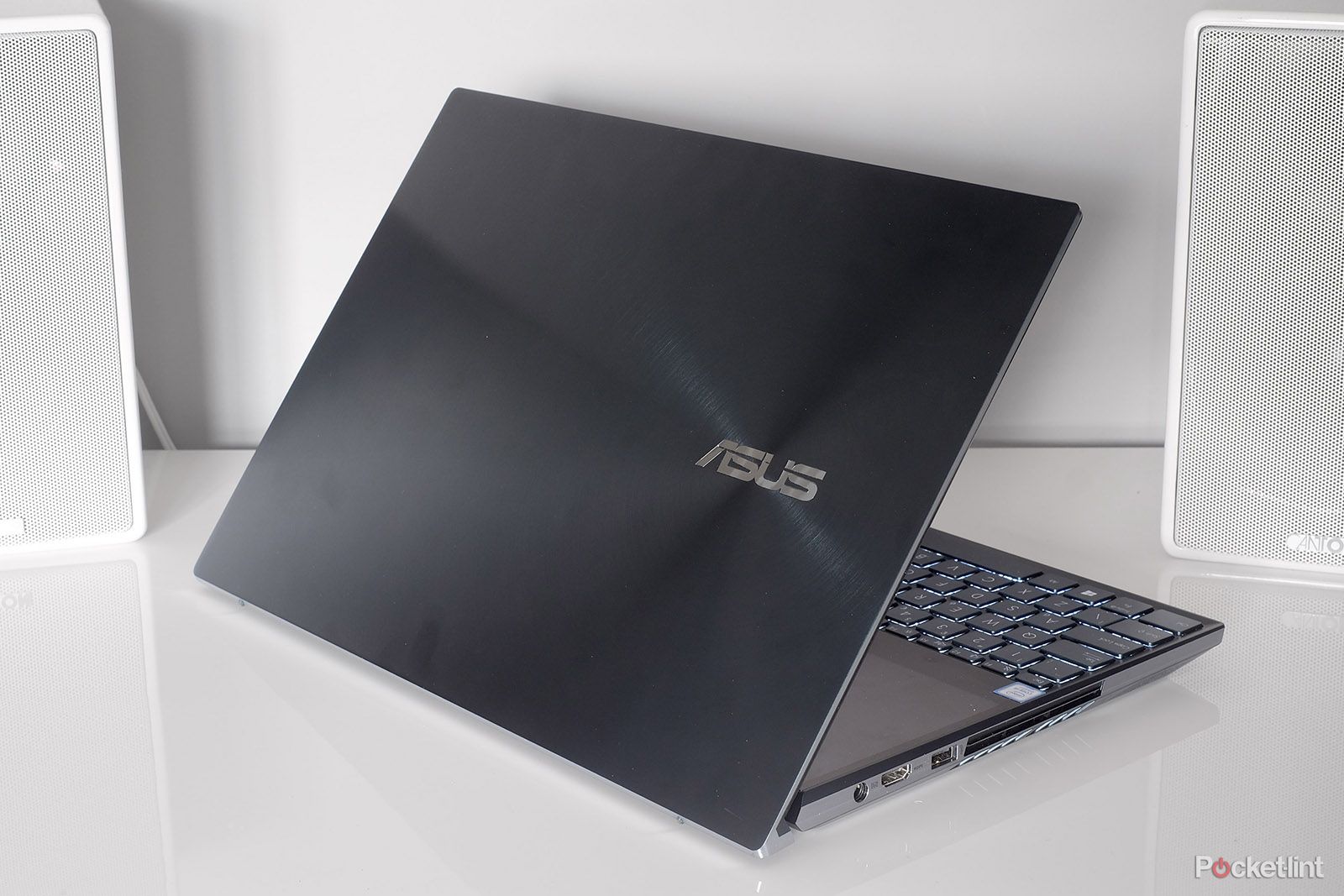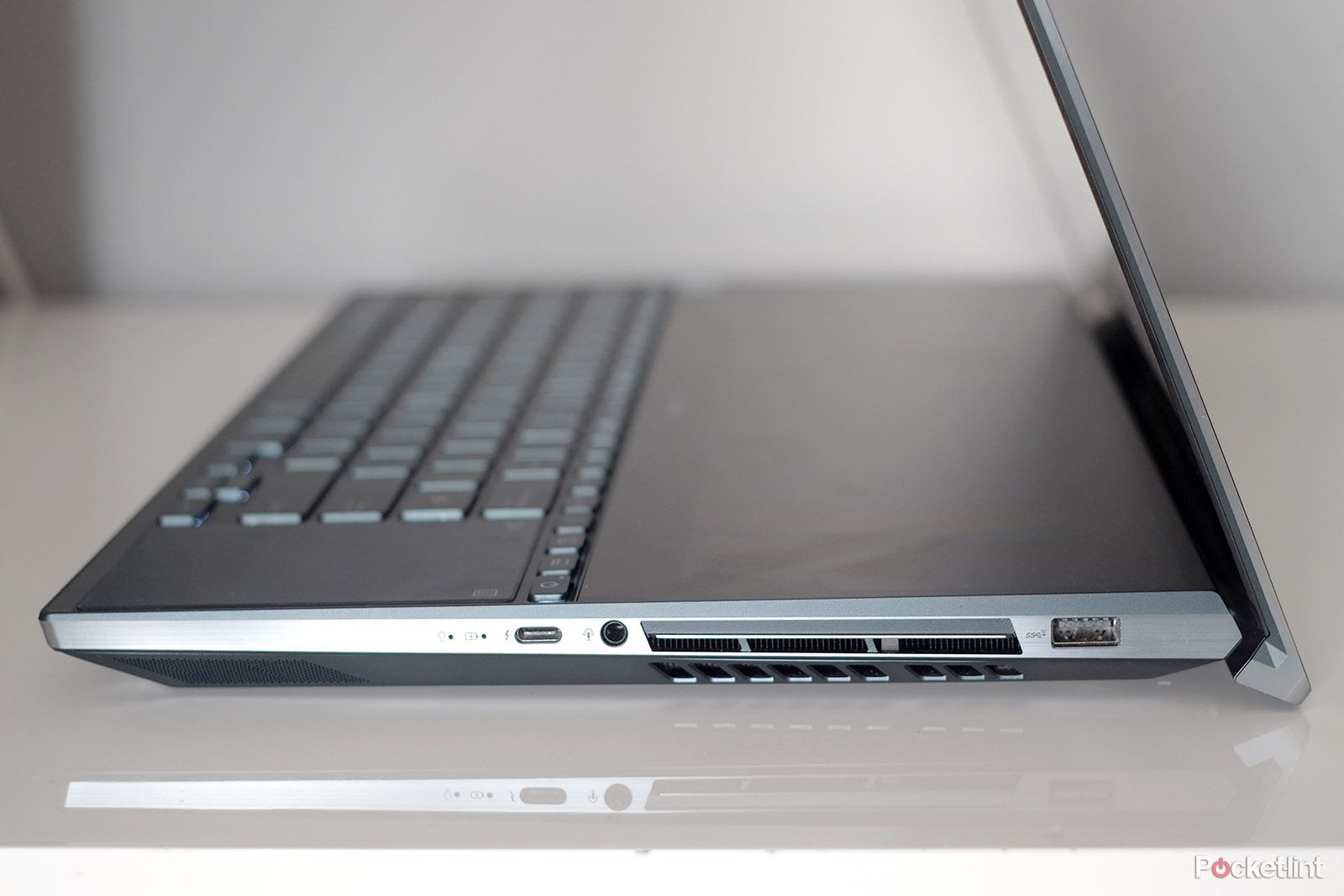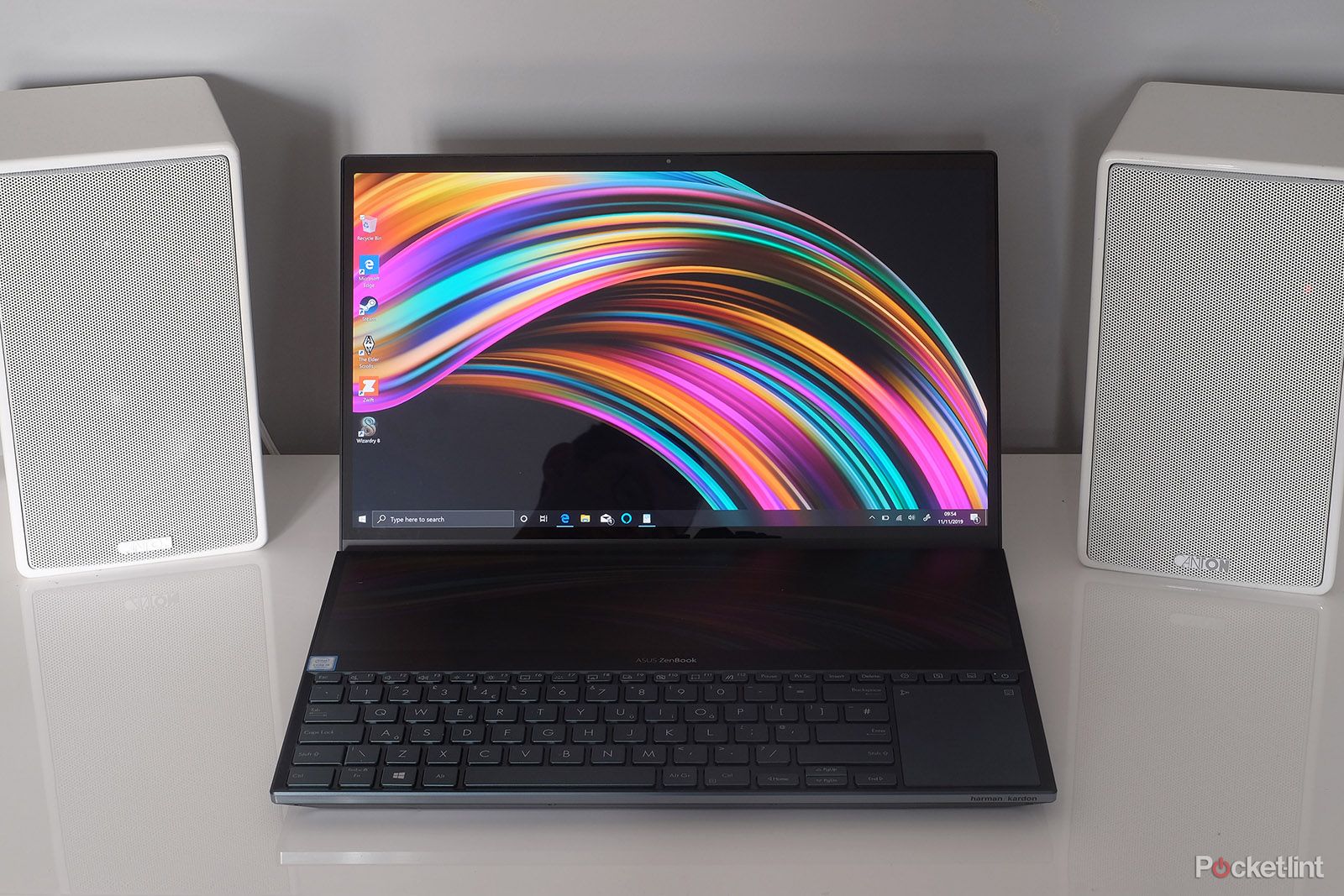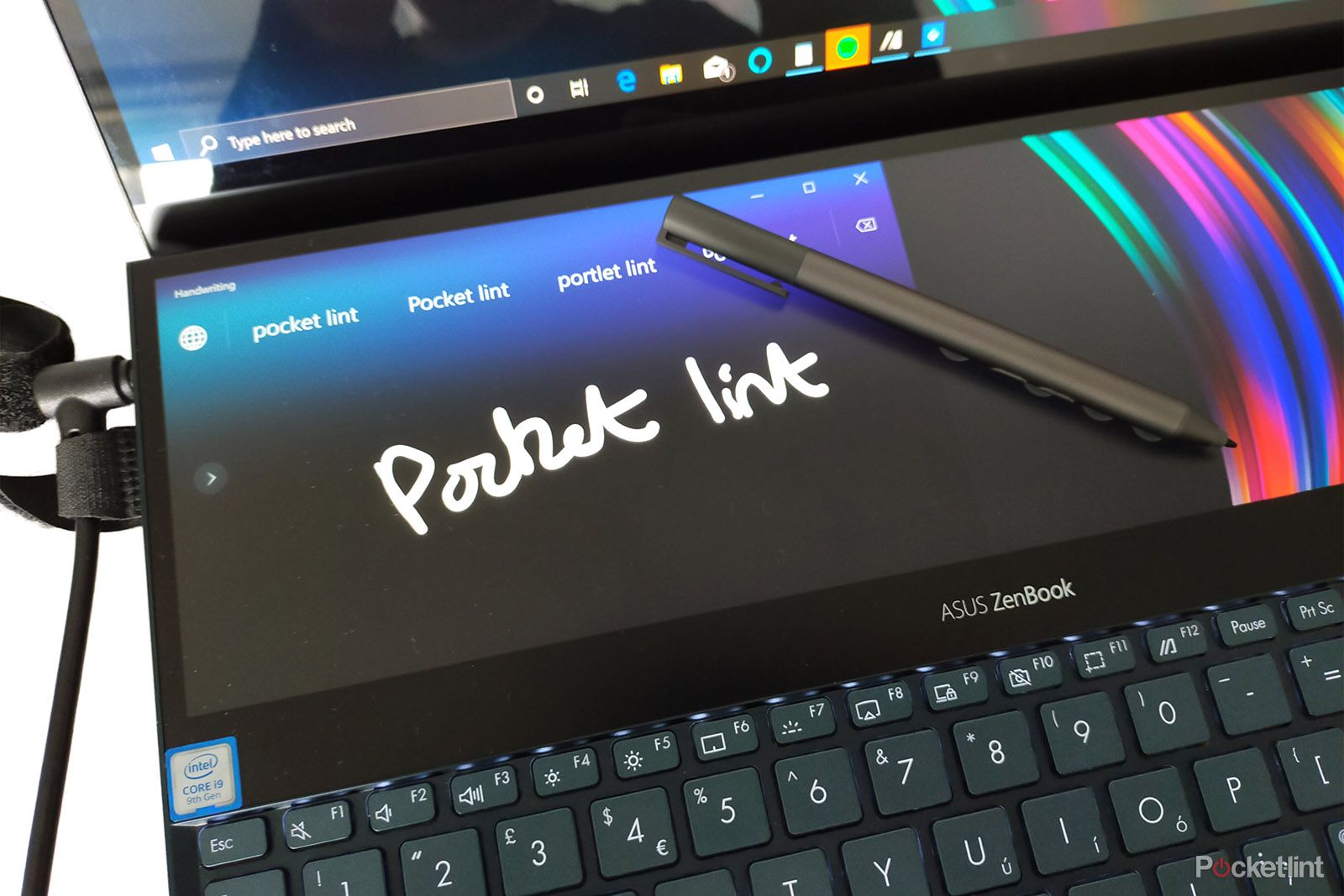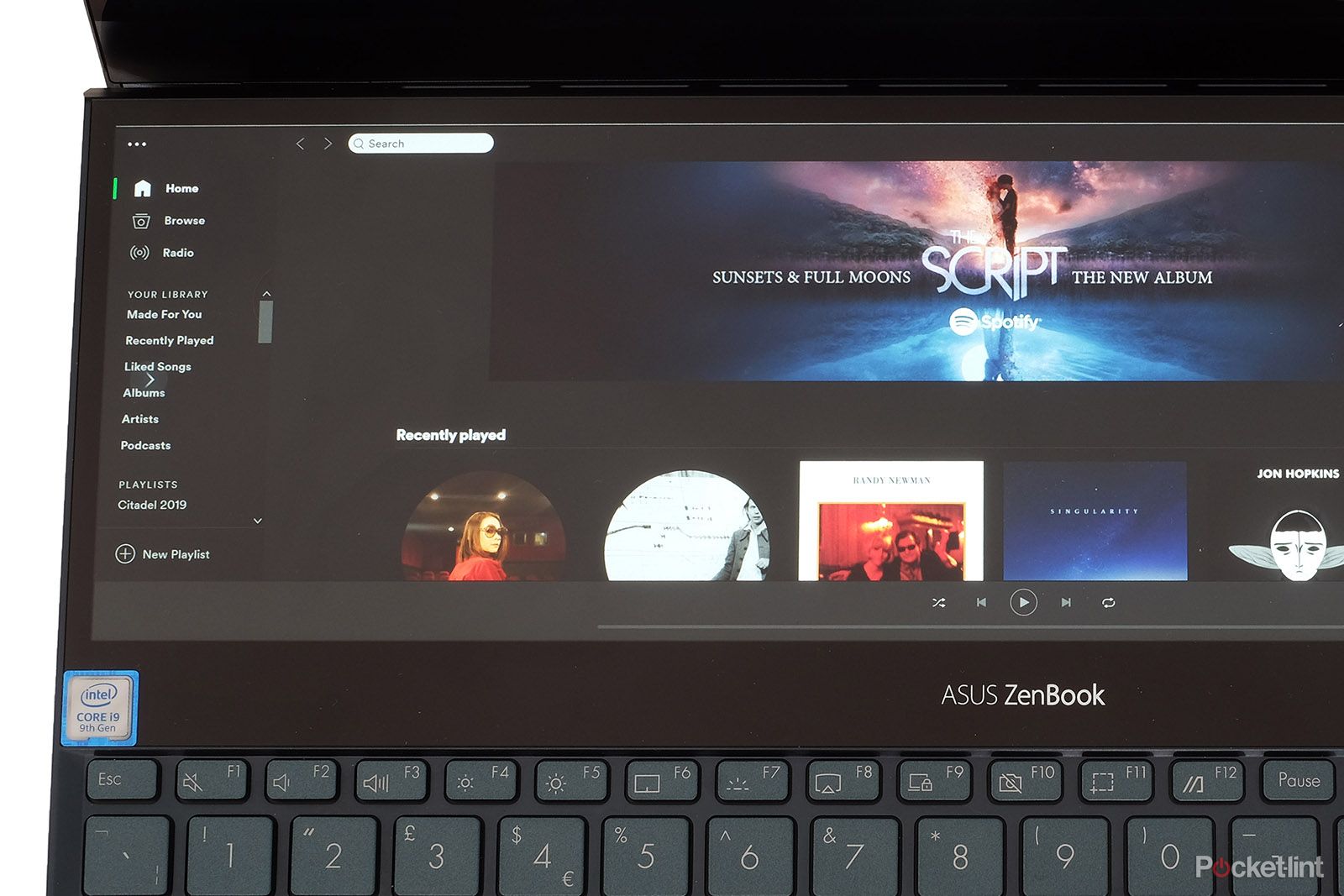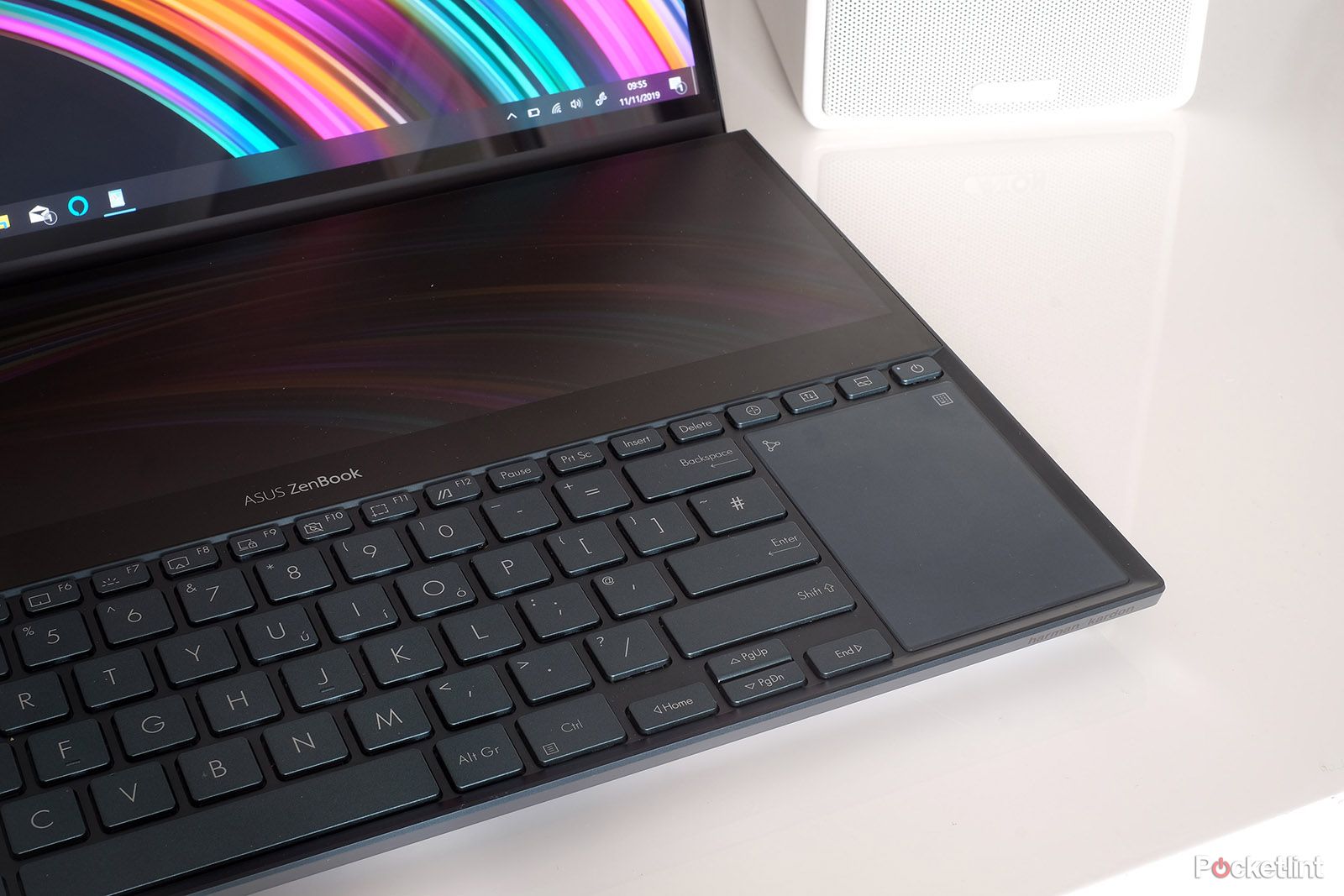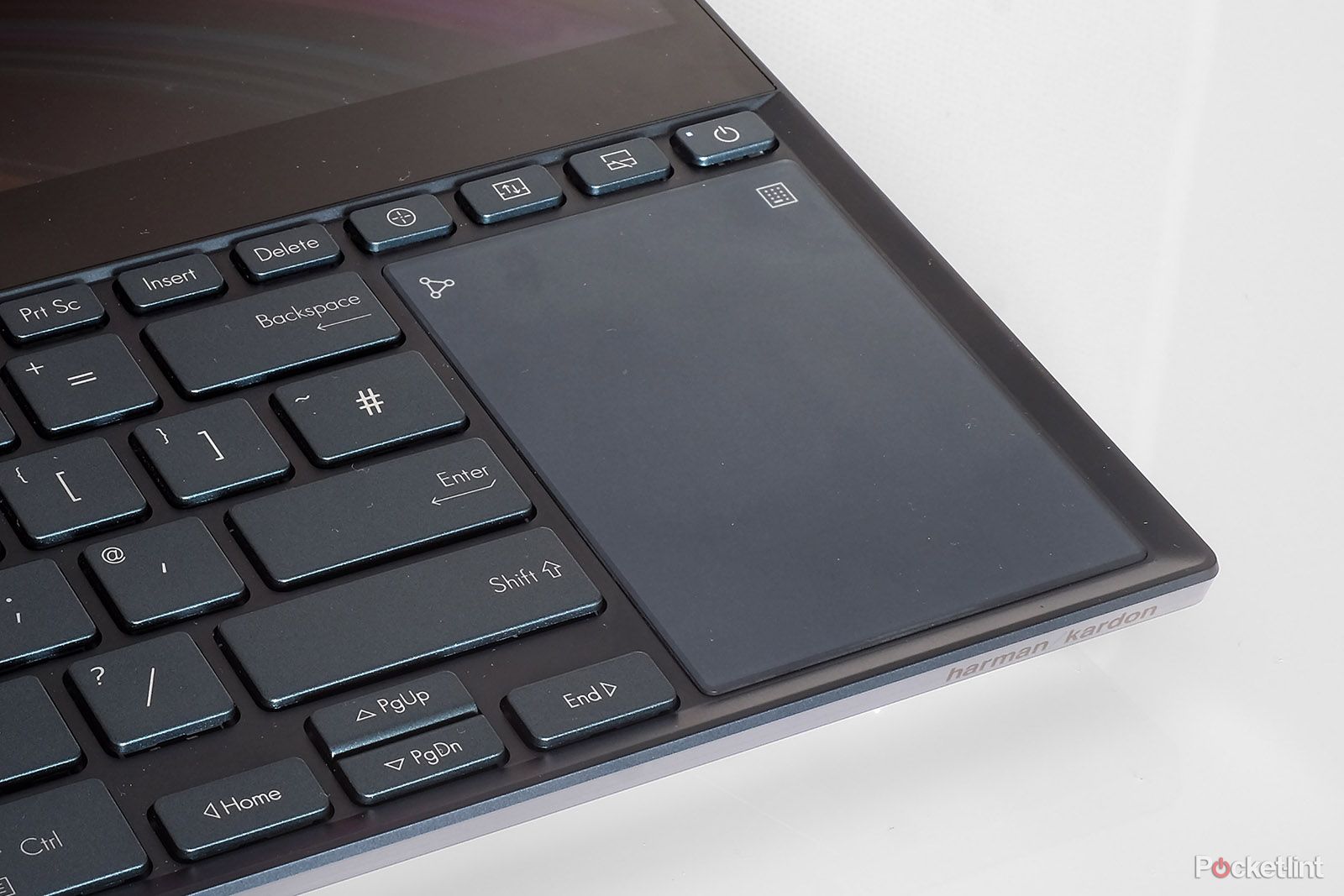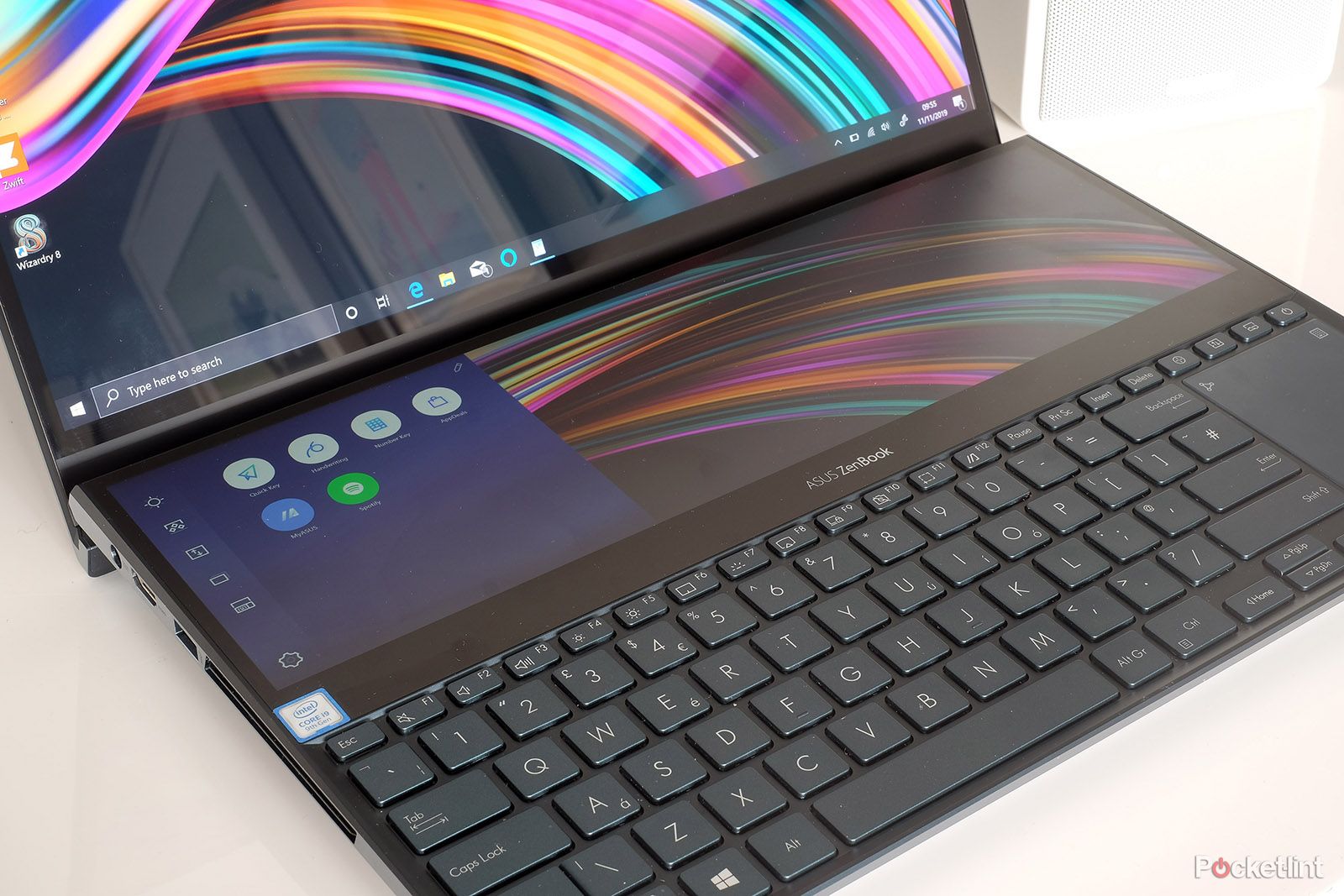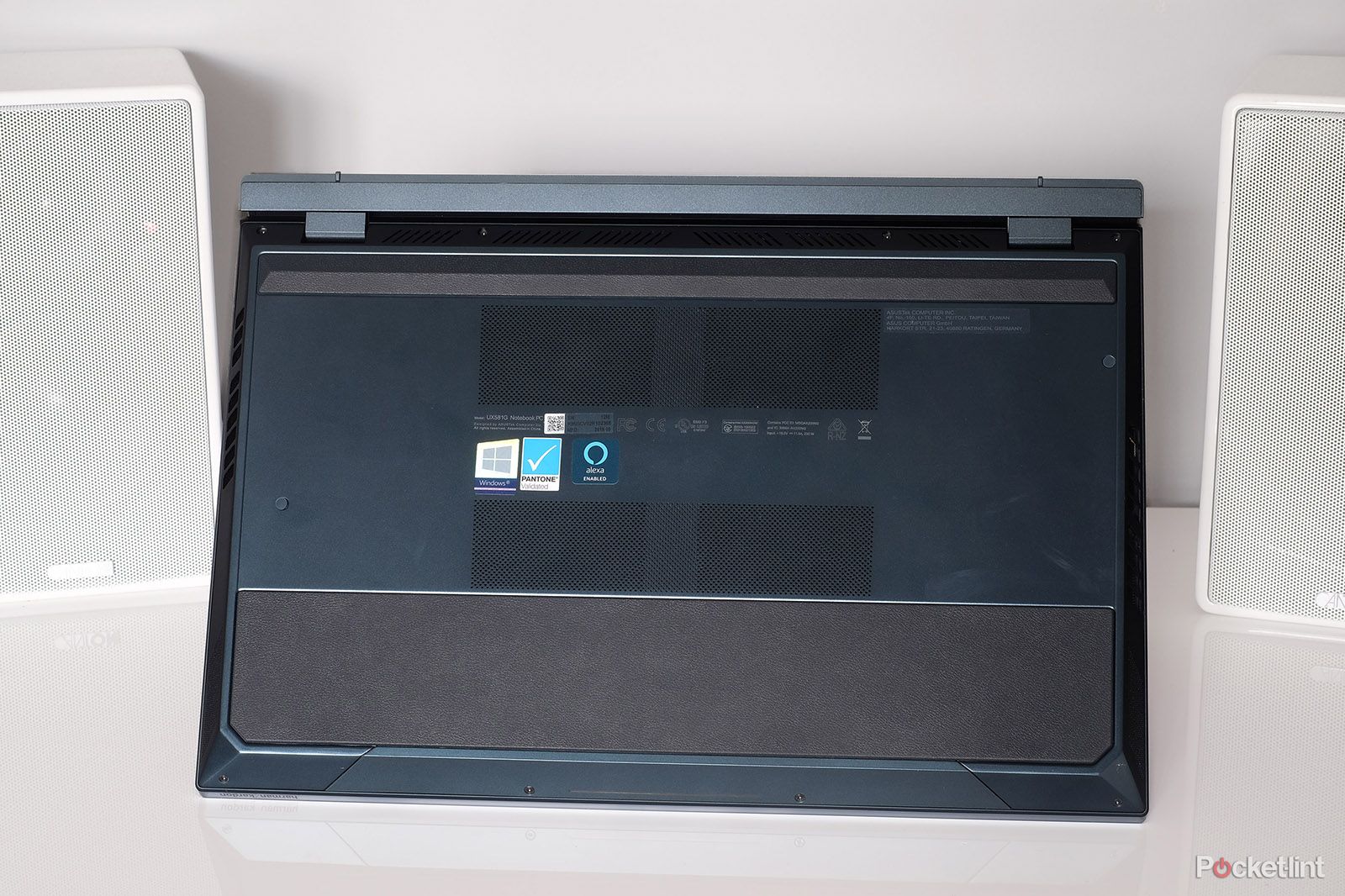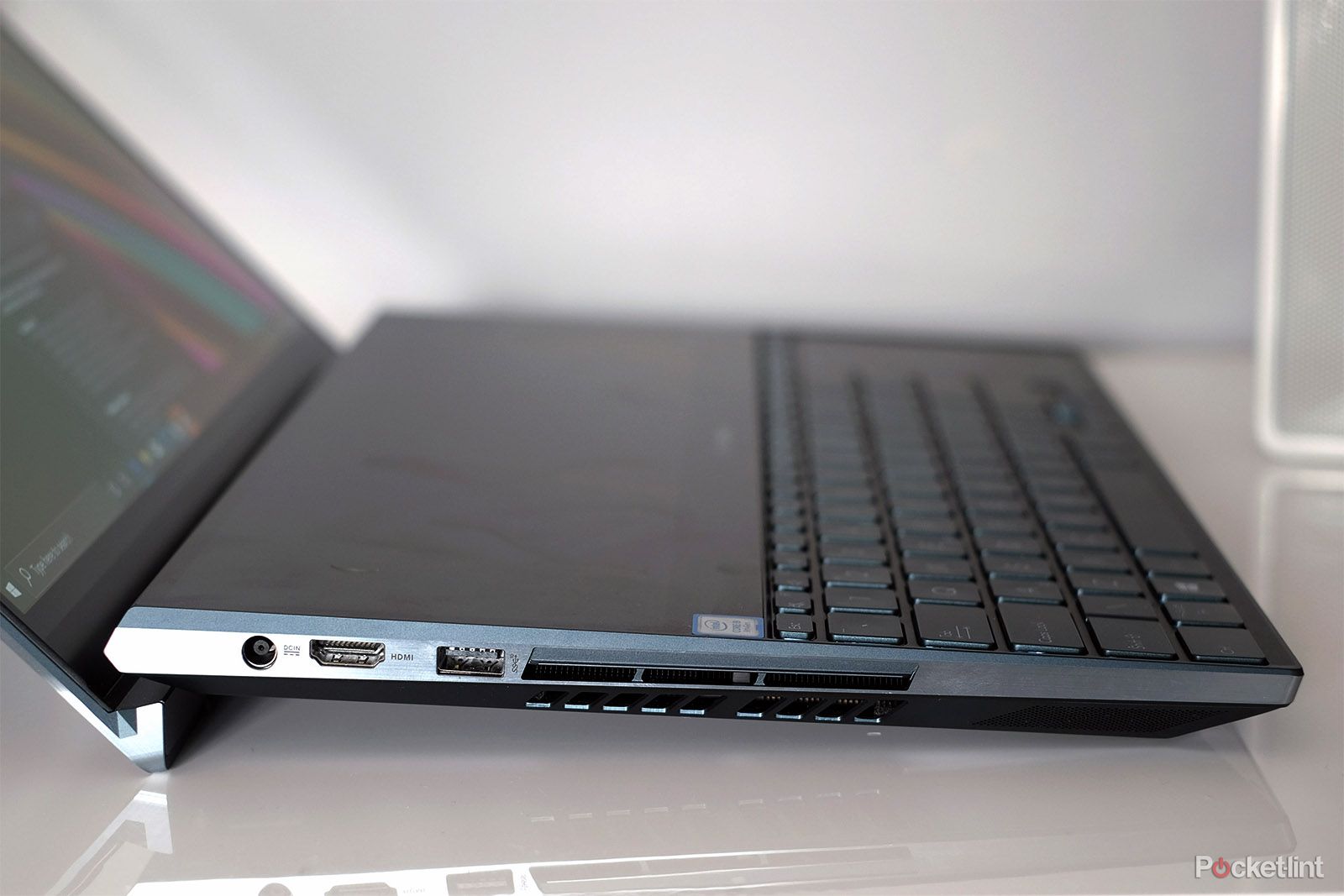Let's get a few things out of the way first. To buy an Asus ZenBook Pro Duo UX581GV you have to discard all ideas about totting up the raw specs you get per pound, like someone logging their weekly shop in Excel.
The Asus ZenBook Pro Duo is no friend to that kind of thinking. But it is one of the most dramatic and interesting laptops in years. It's a gaming laptop that Asus also wants to sell to creative professionals and hobbyists, because it has two screens - and you can run apps in both.
We're not convinced the pros buy it over a Wacom Cintiq or a fat workstation, but the Asus ZenBook Pro Duo comes will all sorts of unexpected benefits.
Our quick take
The Asus ZenBook Pro Duo's 4K OLED screen is superb, the keyboard as good as any put into a laptop, the trackpad almost confusingly usable, and we'd never say no to a RTX 2060 graphics card.
We're even charmed by the ScreenPad Plus, much more so than the second-screen models that Asus has slipped under some of its trackpads in other models (such as the ZenBook 14).
However, start prodding at the second screen feature to see what it can really do and it will often start falling apart at the seams. Which is a shame, as when it's good it's really, genuinely usable.
All in all, the enBook Pro Duo meanders between the sublime and ridiculous. And we rather love it for that.
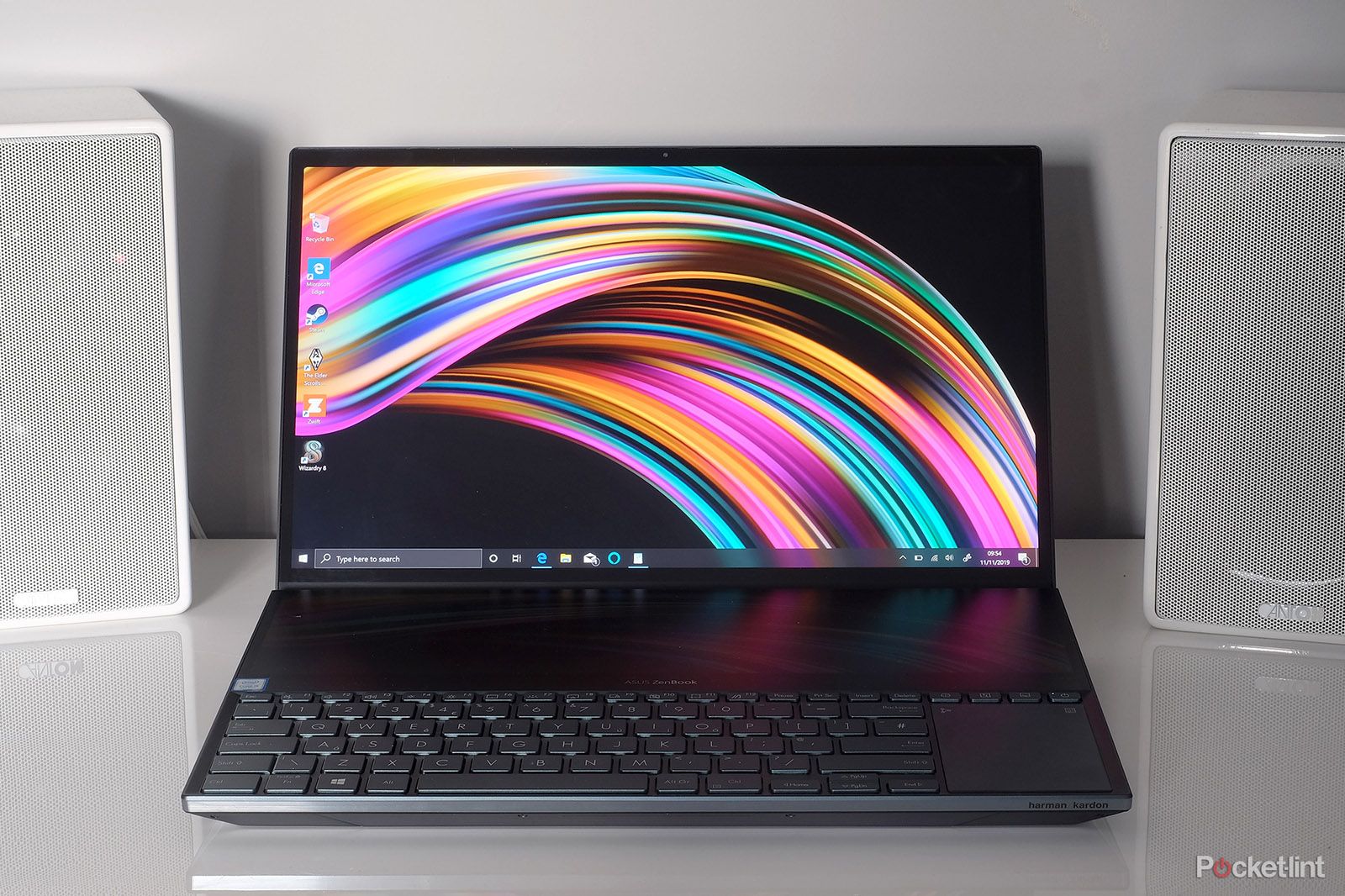
Asus ZenBook Pro Duo - 4.0 / 5
| FOR | AGAINST |
|---|---|
|
|
Asus ZenBook Pro Duo UX581GV
Design
- True dual screen design
- 240 x 359 x 24.6mm
- 2.5kg
Asus slides an LCD screen under the touchpads of some of its frankly more normal laptops, such as the ZenBook 14. But the Duo has a very large widescreen display above the keyboard - it's a true two-screener in that regard.
This is an evolution of a trend in gaming laptops. Asus's Zephyrus and the Acer Predator Triton have a blank spot above the keyboard, in order to fit serious graphics hardware and cooling into a smaller frame. Asus has done the same here, but hidden it all under another screen.
Not met one of those before? Your first reaction is likely to be that the Asus ZenBook Pro Duo looks weird. It does look weird. And it is weird.
The screen pushes the keyboard right into the bottom lip, booting out the palm rest. And while Asus has tried its best to tone down the gamer style of this basic layout, the Asus ZenBook Pro Duo is no beauty.
The build quality is excellent, though, as you'd expect for three grand. The lid and inner parts not covered in glass are aluminium, and there's zero keyboard flex. Leather-effect high friction pads sit on the bottom, and help keep it in place when on a table or, in more desperate times, on your knees.
This laptop is also a very manageable size and weight considering everything going on inside. Asus's website may dress the Asus ZenBook Pro Duo up as a laptop building designers and animators will love, but it's a gaming rig at heart.
It's 24mm thick and weighs 2.5kg. It fits into a rucksack made for 15-inch laptops, no problem. We wouldn't want to carry it around all day every day, but you could. At a stretch.
The least expected benefit of the design is how well the Asus ZenBook Pro Duo copes with cramped spaces. Don't have enough room to open up the lid? Just flip the app over to the second screen. We wrote half this review on a packed bus home from Bromley, using just the ScreenPad Plus – that's the name of the second screen. It also stops anyone from poking into your business without it being extremely obvious.
Screens
-
Main: 15.6-inch 4K (3840 x 2160) OLED touchscreen
- 89% screen-to-body ratio, 100% DCI-P3 gamut
- Second: 14-inch (3840 x 1100) ScreenPad Plus touchscreen
So what are these screens? The main one is an extremely high-spec 15.6-inch 4K resolution OLED panel. Virtually no laptops have OLED screens. Panels the right size for TVs and phones are now mainstream. Laptop-size ones aren't yet, though, so it's one pretty good excuse for the sky-high price of this laptop.
It will look extremely saturated when you first turn the Asus ZenBook Pro Duo on, because OLED panels tend to be able to display a far wider range of colours than LCD panels. Illumination is per pixel, too, for deep blacks and no backlight bleed issues, like some LCD panels experience. As a result the contrast is superb. And max brightness is enough to make your eyeballs ache indoors.
You have some control over the screen's look, but not complete control. The MyAsus app lets you change the colour temperature, but you can't alter saturation if you prefer a more chilled-out look. Asus says it has tailored the look of the panel based on the DCI-P3 standard, that of the film industry, so it's far richer than the sRGB style most laptop makers aim for.
The result is that the punchiest tones, like the bright red Microsoft News tile in Windows 10, look far more vivid than they would in almost any other laptop. It's initially disconcerting, but is really just a sign of quite how punchy this OLED's colours are.
There are a couple of issues. Look close and you'll see a dotty patterning to the surface. This seems likely a result of the touchscreen or digitiser layer. It doesn't bother us, but at times like this we have to remember we didn't just spend £3000 on the Asus ZenBook Pro Duo. If we did, maybe we wouldn't be so happy.
We also saw some slight fluctuations in the light level of the screen a few times. It looked like mild flickering. We only saw this in a room with fluorescent lighting, which led us to wonder if it affected the Asus ZenBook Pro Duo's reading of the ambient light level. But the laptop doesn't seem to have an Auto Brightness mode. We'll have to shrug this one out, and recommend you keep an eye out for this if you buy a Asus ZenBook Pro Duo.
The 14-inch screen below matches the main one for vertical resolution (at 3840 pixels, as per 4K, but less tall at 1100 pixels), but has quite a different character to the display. It's an LCD with a matte textured finish, not dissimilar to a trackpad.
This makes it immediately less impressive-looking than the main screen, even though its colour reproduction is perfectly good. But it's a great design decision. The matte finish prevents irritating reflections and provides a much nicer surface on which to use the included stylus.
The stylus is not a made-for-Pro-Duo affair. It looks much like the pens you get with some higher-end Asus, HP and Lenovo laptops. You can use it on either screen too, but the context of the screen's position makes it seem more useful.
And here we come to the ways you might actually use the Asus ZenBook Pro Duo's second screen. There's actually a bunch of legit jobs for it, beyond just a dedicated Spotify display. You could, for example, open up a Photoshop brush window in here, or the VST of a synthesiser in a music sequencer like Reason or Ableton, or you could have a chat window open while playing a multi-player game.
Asus does provide custom widgets made just for the second screen like a handwriting window. But as this functions just like a second display, you can put any draggable window down there. The angle also makes the stylus use feel more natural, which is important for the artsy angle.
There are a few problems. We had to manually set the lower screen's scaling to 200 per cent to avoid Windows 10 shrinking any apps dragged down (and this wasn't a preset). This initially caused some very odd issues. Steam ended up in a never-ending scaling loop, flickering in and out of existence 100 times a second. The interaction between the two displays is unavoidably wobbly as it stands.
Manually altering the scaling to 200 per cent also killed the Asus-made UI for the lower screen. Trying to tweak how the displays operate is a recipe for a chain reaction of headaches, largely because Asus has had to create a system (ScreenPad Plus) within a system (Windows 10) to make it work. You wouldn't see this problem in Apple land, because it would have control over the hardware and software.
Keyboard and trackpad
- Textured glass touchpad with light-up NUM pad
- 1.4mm key travel
- Palm rest included
But buy an Apple and you miss out on the Asus ZenBook Pro Duo's great keyboard. It has standard chiclet keys, not ones that try to emulate a mechanical keyboard. Their travel, chunky response and general feel are excellent.
We did miss the palm rest, but you get a custom rest in the box to make up for it. This is a simple wedge of plastic with a fake leather top surface. It doesn't clip into the Asus ZenBook Pro Duo, but does make the typing experience much more familiar and comfortable, as long as you have a flat surface on which to use the laptop. You can't use the rest on your knees, though, at least not successfully.
The keyboard also has a 3-level backlight and lots of useful shortcut function keys. You can turn the ScreenPad Plus display on and off, and alter the fan behaviour with just one tap.
Even the touchpad is solid, which is much more of a surprise. The surface is textured glass with a surface feel to match the very best touchpads available. It's a relatively small rectangle, sat to the right of the keyboard, but is much more intuitive than expected, as long as you're simply browsing or writing docs. It's a bit small for photo or image editing.
There's also a special extra: press the calculator button to its top-right and the touchpad turns into a numpad. That's right, the Asus ZenBook Pro Duo actually has three screens.
Performance
- Intel Core i9-9980HK processor, 32GB 2666MHz DDR4
- Nvidia GeForce RTX 2060 (6GB GDDR6 VRAM)
The Asus ZenBook Pro Duo will not make you wonder why laptops haven't been made like this for years. But it is easier to sink into than you might guess.
Asus has also tooled it up with some of the best possible components. It has an Intel Core i9-9980HK processor – an eight core, 16-thread beast that's more than twice as powerful as the Core i7 CPU you'll find in the average £1500 style laptop. This is the kind of processor you might find in a professional workstation laptop.
Its 1TB SSD reads and writes at up to around 2250MB/s and our review Asus ZenBook Pro Duo has 32GB RAM, overkill for just about everyone bar the people who really should consider a laptop this powerful. Our video editor at Pocket-lint would appreciate this sort of spec.
For the rest of us, the Asus ZenBook Pro Duo's Nvidia GTX 2060 graphics chipset may be of more interest. It's the kind of card that can play just about any game you like at 1080p or 1440p with all the sliders set to max, while still cranking out good frame-rates.
We tried Prey (2017) at 4K with graphics maxed-out and still found it smooth, although the 60fps hounds will have to cut down the resolution to keep it locked. Here's where we have to mention the crunchy issue of value.
Only care about gaming? For the price of the Asus ZenBook Pro Duo (with a lower-end Core i7 CPU, 512GB SSD and 16GB RAM) you can buy an HP Omen 17 with a Core i9 CPU, 32GB RAM, GTX 2080. The latter machine has Nvidia's graphics chipset, which is loads more powerful than the Duo's RTX 2060.
As we said at the start, the Asus ZenBook Pro Duo isn't for those who like to tally raw specs up to the cash spent. Still, we think this is a great gaming laptop, and we're quite impressed by its cooling too. The hinge lifts the Asus ZenBook Pro Duo up slightly, to create a little tunnel of airflow. This laptop is almost silent when performing lighter jobs like video streaming and pottering about online.
Battery life and speakers
- 71Wh 8-cell battery pack
- 230W power adapter
- Claimed 7.5 hour battery life
Solid as the Asus ZenBook Pro Duo is as a work laptop, it is not made for longer-term use away from the charger. The Core i9 CPU alone (in this review model anyway) should tell you that. It's a power-hungry processor.
The ZenBookPro Duo lasts for over 3-ish hours of light work, despite a battery that, at 71Wh, would seem generous in a slim and light laptop. The Duo is made for performance, not for a full day's work of idling about in Excel spreadsheets or Word docs.
The power adapter is big and heavy too, like those of just about every laptop this powerful.
We're also not impressed by the Asus ZenBook Pro Duo's speakers. They may have the Harman Kardon name attached, but their depth, volume and tone aren't worth much more than a shrug.
You don't get as many connectors as some gaming laptops either, although we do think most of the important areas are covered. There are two USB 3.1, a full-size HDMI, a 3.5mm headphone jack and a Thunderbolt 3 USB-C. We think some creative pros would appreciate a memory card slot, but then many of them use a MacBook, so what do we know.
Asus ZenBook Pro Duo UX581GV
To recap
With a superb 4K OLED screen, a keyboard as good as any put into a laptop, a trackpad that's almost confusingly usable, and an RTX 2060 graphics card, there's a lot to love about this slightly barmy laptop. The second screen often fails to live up to potential, though, and this whole experience is rather expensive.

